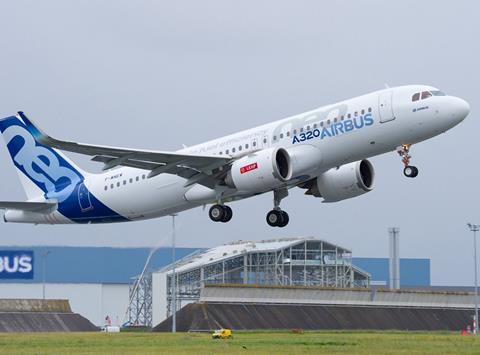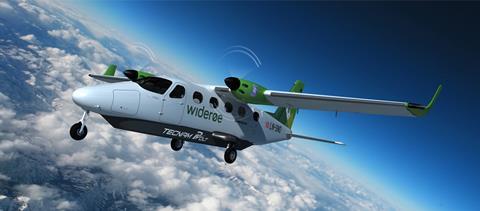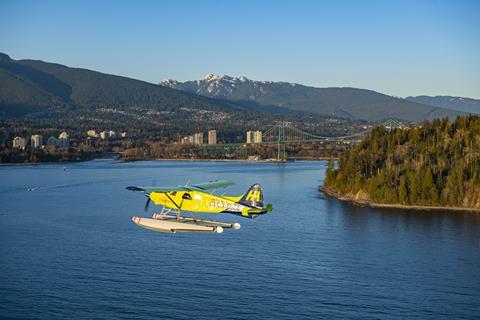There’s no shortage of hype about how electric aircraft will transform the air transport industry.
But do not expect electric propulsion to replace turbofans any time soon.

Before that happens, the industry must overcome a very real technical problem: replacing turbine-driven airliners with similarly sized electric aircraft will require a monumental leap in battery technology.
That’s the conclusion of several Carnegie Mellon University researchers who created hundreds of thousands of design iterations to determine the battery energy density required for electric versions of three aircraft classes: regional airliners, narrowbody jets and widebodies aircraft. The American Chemical Society published the results of the study in a 2020 paper called “Performance Metrics Required of Next-Generation Batteries to Electrify Commercial Aircraft”.
Bottom line: while all-electric power might work for small commuter aircraft, even today’s best lithium-ion batteries have nowhere close to the energy density – the amount of electric power stored per kilogram – that large electric aircraft would require. As a number of start-ups and operators push forward development of electric aircraft, the conclusions suggest electric powerplants will not soon displace gas-burning engines on the wings of large commercial aircraft. The energy density of avgas is simply unmatched.
Even small regional aircraft would need batteries with significantly more energy density than exists with today’s technology. Current-generation lithium-ion batteries have an energy density of about 250Wh/kg, according to the paper. (Batteries in Tesla’s Model 3 sedan reportedly do a bit better, with energy density of about 260Wh/kg.)
Yet, it’s not until around energy density of 480Wh/kg that a significant number of regional aircraft designs start becoming viable, says Venkat Viswanathan, an associate professor in the department of mechanical engineering at Carnegie Mellon who co-authored the research.
If Viswanathan and his colleagues are right, the viability of larger electric-powered airlines is some ways off. Even if new technology enables energy density to inch up 5% annually – the rate of recent improvement – batteries will not reach the threshold required for regional airliners until around 2033.
DESIGN ITERATIONS
Not knowing what future electric airliners might look like, the Carnegie Mellon researchers calculated energy density requirements for hypothetical airliners using historic data. The academics gathered empty weight fraction, wing aspect ratio, wing loading, drag coefficient and mechanical efficiency data from more than two dozen commercial aircraft types, such as the De Havilland Canada Dash 8-400 turboprop, Boeing 737 narrowbody and Airbus A350 widebody.
Using those parameters, they created 100,000 hypothetical design iterations for each class of aircraft, then simulated the performance of those designs when operating defined missions. Regional aircraft were assigned to fly 350nm (648km) with 30 passengers and a mass of 50,000kg, narrowbodies were evaluated on flights of 500nm with 150 passengers and a mass of 100,000kg, and widebodies on 1,000nm flights with 300 passengers and a mass of 250,000kg.
The simulations showed that the average regional aircraft would require 600Wh/kg of battery density, narrowbodies would need 820Wh/kg and widebodies a whopping 1,280Wh/kg.

NICHE MARKET?
Electrifying a typical regional jet – a Bombardier CRJ or Embraer ERJ, for instance – seems unlikely in the near term. “That’s not to say that there’s no regional aircraft that would be satisfied,” says Viswanathan. “You could maybe do 10 passengers, which is a very different part of the design envelope.”
Many of today’s electric-aircraft development projects are focused on small commuter-type aircraft. For example, Harbour Air of Vancouver, Canada is working to electrify its six-passenger DHC-2 Beaver floatplane. Airframer Tecnam is working to develop an all-electric version of its Tecnam P2012, a nine-passenger aircraft.

Those companies and others say their designs will cost less to operate than gas-powered aircraft and have no carbon emissions. Electricity is cheaper than avgas, and electric motors are mechanically simpler than jet turbines, meaning less maintenance expense, they say.
To capture such benefits, electric aircraft must be able to fly more than a few dozen miles before running low on a charge – meaning they need better batteries. That hurdle is why battery-powered aircraft appear, at least for now, suited only for niche routes and niche aircraft. An “eBeaver” might work great for Harbour’s 64nm hop over the Salish Sea between Vancouver and Victoria, British Columbia – yet current battery technology would be challenged to power a 300nm flight from San Francisco to Los Angeles.
Engineers can likely achieve more range through novel propulsion systems and by developing clean-sheet aircraft specifically designed for electric propulsion. US firm Eviation is pursuing the clean-sheet strategy by developing Alice, a nine-passenger electric aircraft the company says will have 440nm of range. NASA, meanwhile, is exploring how distributing propulsion across 12 small electric motor-driven propellers might increase the efficiency of a battery-powered Tecnam P2006T.
In theory, some special combination of design attributes ought to allow regional aircraft to get by on less battery energy density. Out of the 100,000 regional aircraft design iterations simulated by the Carnegie Mellon team, only a sliver – 17 hypothetical airliners – were able to fly with 30-plus passengers more than 350nm with batteries having density of 450-500 Wh/Kg, says Alec Bills, a graduate research assistant at Carnegie Mellon, who co-authored the paper.
Viswanathan cautions he’s become less optimistic about the significance of distributed propulsion. He also notes that while new designs such as lightweight airframes may increase electric-aircraft efficiency, those gains will take years to work their way onto new aircraft types.
“Early generation aircraft tend to be less efficient, not more efficient,” he says. “Of course, later on it gets better.”
BETTER BATTERIES
The many companies developing electric-aircraft prototypes are benefiting from lithium-ion batteries designed by the automotive industry. Yet to make electric flight viable, the aviation industry itself must advance battery technology, says Viswanathan.
That is partly because the automotive sector appears satisfied with existing battery performance. In June, Tesla cancelled plans for a 520 mile-range “Plaid +” version of its Model S, with chief executive Elon Musk saying 400 miles was sufficient for most drivers, according to a June report from electric transportation publication Electrek.
“The trajectory of automotive batteries is basically cost,” says Viswanathan. “We have enough performance in terms of energy density.”

Though lithium-ion batteries have made great strides in the past decade, there seems an upward limit to how much energy density they can achieve. Viswanathan says the projected maximum specific energy for lithium-ion batteries is around 400–500Wh/kg – less than what a typical regional airliner would need.
“You need to move beyond current battery technology,” he says.
One battery chemistry with high-energy-density potential is lithium/fluorinated carbon, Viswanathan says. Such batteries require more development but could theoretically power regional and narrowbody aircraft.
Though aircraft have different battery requirements than automobiles, the sectors could be complementary, says Viswanathan.
“Aviation batteries necessarily will look quite different than the automotive batteries in terms of the chemistry choices, but there’s a lot of synergy that can be exploited in terms of the manufacturing facility,” he says. “The manufacturing plants could be reused.”
But the electric-aircraft sector must take the lead. And in doing so, companies now developing small electric aircraft are poised to push forward the entire battery sector.
“I think it really is the next playground for a large number of battery scientists,” says Viswanathan. “Getting more cross pollination of ideas between battery scientists and aerospace engineers is the way to go. Aviation is the next frontier.”































